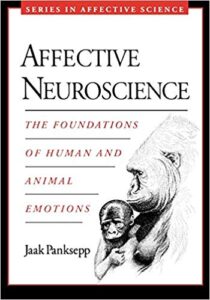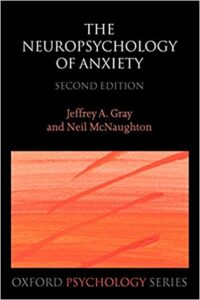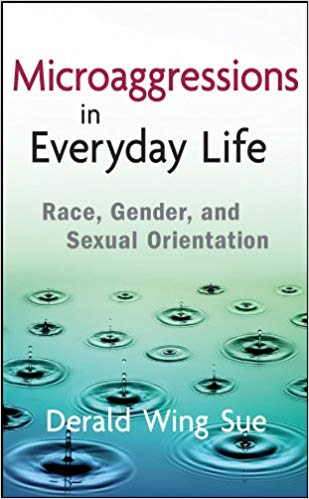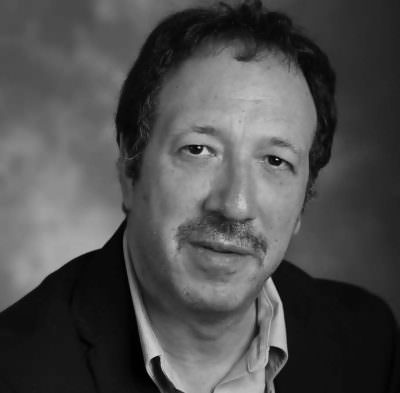Beware the Ideologues in Psychologists’ Clothing
The American Psychological Association (APA) recently released their Guidelines for Psychological Practice with Boys and Men (paralleling, in principle, their 2007 guidelines for girls and women). It manages to be simultaneously predictable, reprehensible, infuriating and disheartening — no mean feat for a single document. Make no mistake about it: this document constitutes an all-out assault on masculinity, as such — or, to put it even more bluntly, on men. The coup of the APA undertaken by the ideologues and the second-raters is now complete. The field has been compromised, perhaps fatally. And the unforgivable Guidelines provides sufficient but by no means exhaustive evidence of that. The document opens with a series of terminological definitions. These serve perfectly to indicate the nature of the ideological substructure that constitutes the true motivation of the writers. Only a small number of words or phrases were chosen for definition, which means that it is those words that are of prime import. The intent is that the Guideline’s readers will understand, assimilate and come to regard as self-evident the conceptual structure that both selected the words and defined them — and these, by the way, could not possibly be clearer indicators of the post-modern/victimhood ideology.
Here are the words and phrases: Gender, Cisgender, Gender Bias, Gender Role Strain, Masculinity Ideology, Gender Role Conflict, Oppression, Privilege, Psychological Practice, and Gender Sensitive. These are all presented, along with their interpretations and definitions (available here for your detailed perusal: https://bit.ly/2Miaj05). Here’s two, just for the flavor:
- OPPRESSION: Oppression includes discrimination against and/or systematic denial of resources to members of groups who are identified as inferior or less deserving than others. Oppression is most frequently experienced by individuals with marginalized social identities; is manifested in both blatant and subtle discrimination in areas such as racism, ageism, sexism, classism, and heterosexism; and results in limited access to social power (Robinson, 2012; Worell & Remer, 2003).
- PRIVILEGE: Privilege refers to unearned sources of social status, power, and institutionalized advantage experienced by individuals by virtue of their culturally valued and dominant social identities (e.g., White, Christian, male, and middle/upper class; McIntosh, 2008).
There’s absolutely no indication in the Guidelines that these concepts, or their definitions, constitute the axioms of a primarily political viewpoint. There is no consensus among psychologists, for example, about the definition, let alone the existence, of, for example, “masculinity ideology” (although the reader is expected to assume that there is, as a consequence of contextual inference: why would the phrase be included, if it wasn’t widely accepted and used?). There is also no agreement that gender exists solely in the form of “roles” that are learned (as opposed to innate)—although all reasonable scientists agree that much of human behavior, including that related to sex, is learned. Let it be clearly noted, however: there is a vast different between “much of” and “all” (precisely the difference between a thinker and questioner of the scientific type and an ideologue convinced absolutely of his or her a priori rightness).
Finally (and we’ll investigate in detail here, just for the sake of illustration), there is nothing intellectually credible and certainly and indisputably nothing “scientific” and therefore worthy of definition in a document purporting to discuss psychology about Dr. Peggy McIntosh’s appallingly narcissistic, intrinsically racist and dangerously polarizing concept of “white privilege.”

When formulating that idea, Dr. McIntosh merely crafted an opinion piece (it can be found here: http://bit.ly/2HF2yTv) describing, as Wikipedia puts it, the “personal examples of unearned advantage that McIntosh says she experienced in her lifetime, especially from 1970 to 1988” http://bit.ly/2Ge9Gn8). It is absolutely germane to this discussion to note—as outlined, for example, in the Quillette piece Unpacking Peggy McIntosh’s Knapsack (http://bit.ly/2sQU9C0)—that the author of the concept in question had very highly educated, accomplished and wealthy parents, was raised in a community whose median income was quadruple that typical in the US, was educated at exceptionally elite and exclusionary institutes, and spent her life ensconced in a high paying, high-status and staggeringly secure career as an academic in the same milieu. Let me be clear: there is nothing wrong with that—except when such experience is unfairly generalized as something generally to do with “white,” instead of everything specific to do with her remarkable father and exceptionally fortunate economic and social circumstances.
All McIntosh did, when formulated her famous doctrine of “white privilege,” was write a series of questions, rhetorically aimed at herself, about everything that she enjoyed that she arguably did little to earn. Apart from the fact that this inappropriately confuses her personal experience as a wealthy individual, say, with the racial characteristics of an Appalachian coal-miner, it is simply no way of going about formulating a scientific proposition. There are rules for constructing questionnaires—methods for determining if a new concept is valid, reliable and unique—(see Construct Validity, for an intro) and she followed none of them.
Had Peggy McIntosh submitted her “white privilege” questionnaire as an honors’ thesis at an intact psychology department in a credible research university, she would have received a failing grade. She took none of the necessary steps for establishing her hypothesis (that something called “white privilege” exists, and that it is importantly separate from age, education, intelligence, personality, sex, ethnicity, health, attractiveness, height and interest—to mention just a few of the certain confounding variables that play critically important roles in determining success, status, authority and accomplishment). Unfortunately, although entirely predictably, McIntosh’s absolute absence of methodological sophistication mattered not at all to the sociologists, professors of education and social work, cultural critics, armchair Marxists, radical feminists and generally ill-educated and resentful pseudo-academic types who granted her musings the status of undeniable fact, including those who wrote the Guidelines we are currently discussing. And that’s an excellent indication of the absolute perniciousness of the document.
Things deteriorate from there. The post-definition document opens with the claim that “socialization for conforming to traditional masculinity ideology has been shown to limit males’ psychological development, constrain their behavior, result in gender role strain and gender role conflict, and negatively influence mental health” – a claim derived in no small part from the “research” published by the very people who wrote the Guidelines, and one presented, like the definitions, with no indication whatsoever that this claim by no means constitutes anything approximating established scientific fact.
Let me translate this opening salvo into something approximating clear and blunt English. The authors are claiming that men who socialize their boys in a traditional manner destroy their mental health. This translation/clarification needs to be extended to the second major claim of the document, which is distributed more subtly through its body. We’ll begin with this quote, taken from the Guidelines (p. 3): “Research suggests that socialization practices that teach boys from an early age to be self-reliant, strong, and to minimize and manage their problems on their own yield adult men who are less willing to seek mental health treatment,” in combination with this one (p. 3, as well): “Men are overrepresented in prisons, are more likely than women to commit violent crimes, and are at greatest risk of being a victim of violent crime (e.g., homicide, aggravated assault; Federal Bureau of Investigation, 2015).” So, it’s not only that men who encourage their boys to be “self-reliant, strong and manage their problems on their own” destroy the mental health of their children: they also produce adults who are a primary menace to their families and society.
This is all bad enough (and by that I mean inexcusable) conceptually, rhetorically and politically. But it’s also a lie, scientifically—and worse (because not merely a lie; instead, something more unforgivable). To indicate, as the writers have, that it is the socialization of boys and men by men that is producing both a decrement in the personal mental health of males and females and a threat to the social fabric is not only to get the facts wrong, but to get them wrong in a manner that is directly antithetical to the truth.
-

-

First, there is no scientific evidence that aggression, per se, is learned. Like fear, pain, hunger and thirst, rage is instinctual. The biological evidence for this is crystal clear and unshakeable (I would guide interested readers to Jaak Panksepp’s masterful Affective Neuroscience and to Jeffrey Gray’s Neuropsychology of Anxiety, which are the two best books ever written on the biology of motivation and emotion). Aggression in infants is noticeable and measurable in the early months of life, not least as a consequence of the analysis of facial emotion (a science which is well-developed, and which sheds substantive light on the putative inner life of as-of-yet speechless young children). There is substantive individual variation in aggression, but some general truths can be extracted: boys are more aggressive when young than girls, on average; some young boys are more aggressive than others; aggression peaks among young children around the age of two; most aggressive two-year olds have been properly socialized, so that their rage is under control, by the age of four (here are a couple of papers I wrote with my students outlining such findings. The first is heavily biological: http://bit.ly/2Wtb4s0; the second concentrates more on developmental psychology: http://bit.ly/2TkSSPn). So the idea that aggression is learned is not only wrong, it’s backward. Aggression is easy. Civilized behavior is difficult. It is the integration of aggression that is learned. And it is primarily men who teach it, particularly to aggressive boys. How do we know this?
It’s simple – and it is this simple fact that is absolutely damning to the claims in the APA document. What kind of families produce violent young men? Fatherless families. The pernicious effect of fatherlessness is exceptionally well-documented. No serious researchers question it. Even the generally damnable sociologists admit it (see, for example, http://bit.ly/2HB27JL). Fatherless girls tend, for example, toward early sexual experimentation (something in itself linked to antisocial behavior) and, unsurprisingly, higher rates of teenage pregnancy. What might be more surprising, however, is that there is even evidence for earlier puberty among girls whose fathers are absent. Fatherless boys are over-represented as alcoholics, addicts, gang-members, prisoners, rapists and murderers. And there’s plenty of what is positive that is lacking among fatherless children, in addition to the negative that is more likely to be present (here’s a decent summary, in lay language: http://bit.ly/2HB27JL)
Consider this (it’s of primary importance): If it is fatherless boys who are violent, how can it be that masculine socialization produces harm both to mental health and society? The data should indicate precisely the opposite: that boys who are only raised by women are much less violent than boys who have men in their lives and, similarly, that boys who do have fathers are more violent than those who do not.
This is not the case. Period.
The APA document writers — who were also, by the way, very likely to disproportionately cite their own research — are inexcusably unaware of the basic biological facts as well as either ignorant or willfully blind to the data pertaining to the absence of fathers and, therefore, to the lack of a guiding masculine hand.
Why in the world is this happening? Well, the primary axiom, the unshakeable dogma, of the ideologues who generate this kind of propagandistic discourse is that Western culture is to be regarded as an oppressive patriarchy: unfairly male-dominated, violent, racist, sexist, homo-, Islamo- and trans-phobic — and as uniquely reprehensible in all those regards. There is no doubt, to give the devil his due, that human history as such is a blood-drenched nightmare — and that is also true of Western civilization. However, to view humanity in general or the West in particular as solely characterized by its pathology is indication of a profound and fatal failure to discriminate good from bad.
How in the world did this happen? To answer this question, we need to delve a bit more deeply into the history of the APA—the American Psychological Association—itself. The APA is the pre-eminent professional and scientific organization of psychologists in the U.S., with 54 divisions covering the sub-specialties of psychology, and a membership of almost 120,000. It runs many of the major journals in which psychological research is published. Furthermore, it is actively involved in the accreditation of the training programs that produce, in particular, clinical psychologists. For decades, APA approval of a university-based clinical psychological program was an indication of entrance into the intellectual big-leagues, and for good reason. Right up until recently, when people asked me how to find a reliable clinical psychologist, I would tell them, “look for a practitioner with a Ph.D. from a clinical program from a large, research-focused university, who graduated from a program with APA approval.” It is very difficult to become a psychologist via such a route. The entrance standards to the programs are exceptionally high, rivalling or perhaps exceeding those demanded of medical school applicants: a straight A undergraduate average, excellent letters of reference from at least three professors or their professional equivalents, research experience (even publications) in a high-quality psychological lab, and scores on the standardized test for graduate school admission that exceed, in most cases, the 90th percentile. I always recommend that even the most promising of undergraduates apply to at least 20 APA approved clinical programs, all across North America, to increase their chances of acceptance, because the programs are so competitive. A clinical Ph.D. from a good research school has, historically, been almost unmatchable in its utility and in the integrity and knowledge of its holders.
APA-approved clinical programs were once organized on principles formulated at the 1949 Conference on Graduate Education in Clinical Psychology held in Boulder, Colorado, and known for that reason as the “Boulder Model.” Graduates from Boulder Model programs are expected to be scientist/practitioners: to both understand and have contributed to the relevant scientific literature pertaining to psychological issues, as well as to be well-trained in scientifically-validated diagnostic procedures and treatment. For decades, that meant, primarily, exceptional familiarity with behavioral psychology, a very practical approach to treatment, based on an understanding of behavior derived from the careful and eminently scientific work of lab-based psychologists.
It was all working very well until cracks started to appear in the profession in the late 1980’s (uncoincidentally, during the last rise of the political correctness and ideological purity that we will discuss in much more detail). Simply put: the scientists became wary of the increasingly ill-informed and dogmatic approach that increasingly came to characterize the APA, as it became increasingly dominated by political types, who substituted for their lack of genuine knowledge the idiot ideology of the post-modernist and hard-left-leaning political activists. The Association for Psychological Science (APS) was formed in an attempt to retain the integrity of the field. It produced its own journals, held its own conferences, and attracted some 30,000 members. More importantly, for the purposes of the present discussion, it also worked on revising the APA’s clinical program accreditation process, which was criticized by the APS’s President Robert W. Levenson in 2009 in the following manner: “The vast majority of clinical psychologists are now trained in programs in which science plays only a minor role. In the epistemology embraced by many of these programs, the primacy of scientific evidence is rejected, and students are trained to use methods of diagnosis, treatment, and prevention that have little or no scientific support” (https://www.psychologicalscience.org/observer/psychological-clinical-science-and-accreditation-the-good-the-bad-and-the-ugly)
Why should anyone care, apart from the evidence that yet another element of the culture closely associated with universities has become corrupt and unreliable? Let’s enumerate the reasons.
First, in the words of Levenson’s prescient words: “We all will come into close contact with mental illness during our lives. Estimates are that one in four adults and one in five children in the U.S. have a diagnosable mental disorder that impairs normal functioning. Mental illness accounts for over 15 percent of the burden of disease worldwide, consuming over 7 percent of total domestic health spending. With all of the associated suffering and costs, the diagnosis, treatment, and prevention of mental illness must reflect the very best science possible. Good intentions are not enough. History is replete with well-intentioned practitioners offering treatments of no proven scientific value, that were enthusiastically embraced by patients and their families but ultimately did absolutely no good and kept people from seeking truly effective treatments.”
Second, the APA plays a determining role in accrediting clinical psychology programs. Because of that, these programs will be pushed in a corrupt direction, in direct proportion to the blindness of the accreditors. Second, because the APA has established these guidelines any practicing professional psychologist or researcher who disagrees with them or challenges them will be laid open to allegations of ethical misconduct.
Third, the net effect of these Guidelines will be to radically decrease the probability that any man or boy with any sense will go anywhere near an APA-approved psychologist, or dare as an ambitious and interested undergraduate to enroll in an APA-approved clinical psychology program (which are already, by the way, overwhelming dominated at the graduate school level by women).
Fourth, the APA is promulgating under the guise of science absolute mis-truths about the nature of aggression, violence and socialization, and this will culminate in the miseducation of individuals and the warping of social policy.
Fifth, and finally, it should also be noted that there is almost nothing in the document that constitutes principles of psychological treatment. I don’t believe that a newly practicing and interested young psychologist could derive a single technique of sufficiently high resolution to be applied in an actual clinical setting from these so-called Guidelines. They are not guidelines for psychological practice. They are guidelines for how psychologists must think and what they must believe — or else. This is evidence, as far as I’m concerned, of outright fraud in the purpose and delivery of what the APA is purporting to have produced, and conscious intent to ideologically purify the private thinking, scientific hypothesizing and public practice of the psychologists they are charged with accrediting.
There is simply no excuse for what the APA has done. If the people who ran the prestigious and once rigorous clinical programs across North American were thinking clearly, acting courageously and looking forthrightly into the future they would take clear warning from the content of the new Guidelines, denounce them loudly and clearly, and announce their intent to refuse all guidance, supervision and, most importantly, accreditation by and from the American Psychological Association.
The document produced by the APA purporting to provide guidelines for the psychological treatment of boys and men is disingenuous, scientifically fraudulent and ethically reprehensible. I believe that the people who wrote it are ill-informed, ideologically-possessed, morally weak, and malevolent in their unacknowledged and overweening resentment. I am embarrassed and ashamed to have them speak on behalf of my profession, and would like to apologize to the public for not having been sufficiently awake and outraged earlier to have done more to stop something like this from happening.
P.S. I should also point out that the evidence for the promulgation and dissemination of these views throughout the APA continues to mount. The Guidelines we have discussed are by no means the only document indicatively of this trend toward ideology, in the name of clinical practice and research. Consider the titles of these articles, slated to be published in American Psychologist, one of the APA’s flagship and once-scientific journals:
- The Japanese American wartime incarceration: Examining the scope of racial trauma. Nagata, Donna K.; Kim, Jacqueline H. J.; Wu, Kaidi – 1/17/2019 – Volume 74, Issue 1
- Racial trauma: Theory, research, and healing: Introduction to the special issue. Comas-Díaz, Lillian; Hall, Gordon Nagayama; Neville, Helen A. – 1/17/2019 – Volume 74, Issue 1
- American Indian historical trauma: Anticolonial prescriptions for healing, resilience, and survivance. Hartmann, William E.; Wendt, Dennis C.; Burrage, Rachel L.; Pomerville, Andrew; Gone, Joseph P. – 1/17/2019 – Volume 74, Issue 1

Here’s a particularly telling paper and abstract, from the same issue. It was written by Dr. Derald Wing Sue, author of the book Microaggressions in Everyday Life: Race, Gender, and Sexual Orientation, and primary proponent of the microaggression concept:
- Disarming racial microaggressions: Microintervention strategies for targets, White allies, and bystanders. Sue, Derald Wing; Alsaidi, Sarah; Awad, Michael N.; Glaeser, Elizabeth; Calle, Cassandra Z.; Mendez, Narolyn – 1/17/2019 – Volume 74, Issue 1
ABSTRACT: Given the immense harm inflicted on individuals and groups of color via prejudice and discrimination, it becomes imperative for our nation to begin the process of disrupting, dismantling, and disarming the constant onslaught of micro- and macroaggressions. For too long, acceptance, silence, passivity, and inaction have been the predominant, albeit ineffective, strategies for coping with microaggressions. Inaction does nothing but support and proliferate biased perpetrator behaviors which occur at individual, institutional and societal levels. This article introduces a new strategic framework developed for addressing microaggressions that moves beyond coping and survival to concrete action steps and dialogues that targets, allies, and bystanders can perform (microinterventions). A review of responses to racist acts, suggest that microaggression reactions/interventions may be primarily to (a) remain passive, retreat, or give up; (b) strike back or hurt the aggressor; (c) stop, diminish, deflect, or put an end to the harmful act; (d) educate the perpetrator; (e) validate and support the targets; (f) act as an ally; (g) seek social support; (h) enlist outside authority or institutional intervention; or (h) achieve any combination of these objectives. We organize these responses into four major strategic goals of microinterventions: (a) make the invisible visible, (b) disarm the microaggression, (c) educate the perpetrator, and (d) seek external reinforcement or support. The objectives and rationale for each goal are discussed, along with specific microintervention tactics to employ and examples of how they are executed.
It should be noted that Dr. Wing Sue is a member of the faculty at Teachers College at Columbia University (so, part of the Graduate School of Education). Faculties of Education are corrupt beyond redemption—part of the university that does far more than harm, as documented in Lyell Asher’s article How Ed Schools Became a Menace in the Chronicle of Higher Education (http://bit.ly/2DulVKF) which is, unfortunately, paywalled. Here, however, are a few representative paragraphs:
Ed schools, such as Teachers College at Columbia, or Penn’s Graduate School of Education, have trained and certified most of the nation’s public-school teachers and administrators for the past half-century. But in the past 20 years especially, ed schools have been offering advanced degrees in things like “educational leadership,” “higher-education management,” and just “higher education” to aspiring college administrators. And this influx of ed-school-trained bureaucrats has played a decisive role in pushing an already left-leaning academy so far in the direction of ideological fundamentalism that even liberal progressives are sounding the alarm.
To anyone acquainted with the history and quality of American ed schools, this should come as no surprise. The schools have long been notorious for two mutually reinforcing characteristics: ideological orthodoxy and low academic standards. As early as 1969, Theodore Sizer and Walter Powell hoped that “ruthless honesty” would do some good when they complained that at far too many ed schools, the prevailing climate was “hardly conducive to open inquiry.” “Study, reflection, debate, careful reading, even, yes, serious thinking, is often conspicuous by its absence,” they continued. “Un-intellectualism — not anti-intellectualism, as this assumes malice — is all too prevalent.” Sizer and Powell ought to have known: At the time they were dean and associate dean, respectively, of the Harvard Graduate School of Education.
More than three decades later, a comprehensive, four-year study of ed schools headed by a former president of Teachers College, Arthur Levine, found that the majority of educational-administration programs “range from inadequate to appalling, even at some of the country’s leading universities.” Though there were notable exceptions, programs for teaching were described as being, in the main, weak and mediocre. Education researchers seemed unable to achieve even “minimum agreement” about “acceptable research practice,” with the result that there are “no base standards and no quality floor.” Even among ed-school faculty members and deans, the study found a broad and despairing recognition that ed-school training was frequently “subjective, obscure, faddish, … inbred, and politically correct.”

Dr. Scott Lilienfeld – who is, in my opinion, a real psychologist, has already taken apart Wing-Sue’s claims, in the paper Microaggressions: Strong Claims, Inadequate Evidence, published in the American Psychological Society journal Perspectives on Psychological Science (2017, 12, 138–169). Here is the abstract from that article
ABSTRACT: The microaggression concept has recently galvanized public discussion and spread to numerous college campuses and businesses. I argue that the microaggression research program (MRP) rests on five core premises, namely, that microaggressions (1) are operationalized with sufficient clarity and consensus to afford rigorous scientific investigation; (2) are interpreted negatively by most or all minority group members; (3) reflect implicitly prejudicial and implicitly aggressive motives; (4) can be validly assessed using only respondents’ subjective reports; and (5) exert an adverse impact on recipients’ mental health. A review of the literature reveals negligible support for all five suppositions. More broadly, the MRP has been marked by an absence of connectivity to key domains of psychological science, including psychometrics, social cognition, cognitive-behavioral therapy, behavior genetics, and personality, health, and industrial-organizational psychology. Although the MRP has been fruitful in drawing the field’s attention to subtle forms of prejudice, it is far too underdeveloped on the conceptual and methodological fronts to warrant real-world application. I conclude with 18 suggestions for advancing the scientific status of the MRP, recommend abandonment of the term “microaggression,” and call for a moratorium on microaggression training programs and publicly distributed microaggression lists pending research to address the MRP’s scientific limitations.